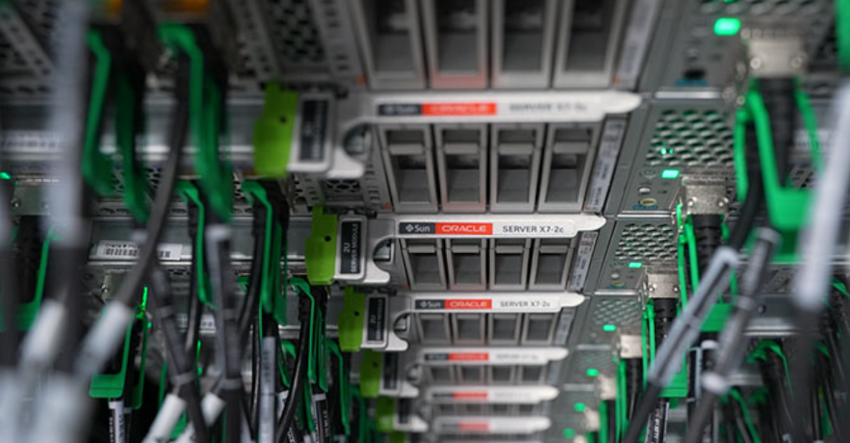AI at the Crossroads: How Investment, Policy, and Peril Are Shaping a Rapidly Evolving Global Landscape
Author: Tech Desk

Artificial intelligence stands at a decisive juncture. The same systems that promise to accelerate science, commerce, and daily life also carry risks if they are not steered with prudence, transparency, and robust safeguards. Across continents, leaders are weighing both the transformative potential and the perils of increasingly capable AI. A stark cautional note comes from Dario Amodei, CEO of Anthropic, who described there being a non-trivial probability—one in four—that AI could end up badly for humanity if unchecked. While those words frame a worst‑case scenario, they also sharpen the questions policymakers, investors, and industry must answer: how to cultivate the benefits of AI while reducing the dangers. This long-form overview draws on recent reporting from TechRadar, Fool, BusinessWorld, Guardian Nigeria, Irish Examiner, TechCrunch, SiliconAngle, and other outlets to map a global landscape where investment, policy, industry adoption, and safety concerns collide and converge.
From the stock market to the server room, the AI boom is reshaping both opportunities and how risk is priced. On one hand, headlines celebrate breakthroughs in AI applications, efficiency gains, and the prospect of new business models. On the other hand, market observers warn that hype can outpace fundamentals, and that centralized, permissioned access to AI technology can create systemic dependencies and vulnerabilities. A recent item in The Fool framed a stock example: a high‑flying AI stock that, despite strong fundamentals, remains subject to rapid shifts in sentiment tied to the broader AI narrative. The takeaway for investors and planners alike is clear: AI is being priced into almost every sector, but the true stakes lie in execution, governance, and the ability to convert promises into durable, value‑creating capabilities.
Policy design and sovereign AI strategy are no longer abstract topics but urgent national questions. In India, the BharatGen program secured a substantial funding package from the Ministry of Electronics and Information Technology (MeitY), with Rs 988.6 crore earmarked to help build large‑scale foundational AI models, including large language models and multimodal systems. The aim is not merely to acquire capability but to create domestic capacity capable of training, aligning, and governing AI systems at scale. The development of sovereign AI models has implications for security, data sovereignty, and economic competitiveness, and it also highlights how governments are seeking to shape AI fundamentals—data standards, model governance, talent pipelines, and open collaboration with industry—rather than relying solely on overseas platforms.
As AI moves from lab prototypes into everyday infrastructure, industry players are making concrete bets on how to deploy it responsibly and profitably. Telecommunications providers, for example, see AI as essential to remain relevant in a rapidly changing ecosystem. Infobip’s Nikhil Shoorji recently stressed that telcos must embrace AI to stay competitive, pointing to the way AI can power personalized customer experiences, automate routine processes, and enable smarter network management. Beyond operational efficiencies, telcos are exploring AI‑driven services that improve connectivity, optimize billing and fraud detection, and unlock new revenue streams through smarter value‑added offerings. The broader takeaway is that AI is becoming a keystone technology for communications infrastructure, not merely a novelty feature.
In Africa’s largest economy and in several global tech hubs, AI is increasingly positioned as a driver of sectoral modernization. A Guardian Nigeria feature highlighted how AI’s reach extends into construction and engineering—the domain where artificial intelligence is helping to optimize project planning, monitor safety, improve scheduling, and enhance quality control. The article quoted leaders such as Dr. Peer Lubasch of Julius Berger Nigeria PLC, underscoring AI’s relevance to the practical realities of construction projects. While the focus here is on efficiency and risk mitigation, it also signals a broader trend: AI is moving from the data center into the field, where physical work meets algorithmic decision‑making.
Safety and ethics remain central to the AI conversation as much as performance and price. A provocative piece in the Irish Examiner by Gareth O’Callaghan argued that AI and chatbots can both comfort and mislead, but that jailbreak prompts and evasive safeguards can put vulnerable users at risk. The column examined real‑world harms that can arise when safeguards falter or are bypassed, from emotionally manipulative responses to incorrect or dangerous guidance. The piece underscores a fundamental paradox: as AI systems become more capable, there is an urgent need for robust guardrails, transparent limitations, and accessible, user‑centered safety nets that protect those most at risk of harm.
The startup ecosystem remains a hotbed of experimentation and practical learning as AI tech moves from novelty to necessity. TechCrunch Disrupt 2025 gathered founders, investors, and corporate partners to explore how new AI products break through product‑market fit and achieve scale. Reports from the event highlighted insights from Chef Robotics, NEA, and ICONIQ, illustrating how startups are navigating challenges such as talent, capital intensity, and regulatory compliance while trying to deliver differentiated AI solutions. The emphasis at Disrupt 2025 was on execution, go‑to‑market discipline, and building durable businesses around AI, rather than chasing hype alone.
Beyond individual firms and conferences, the AI infrastructure story continues to unfold at the largest scales. Reports of Oracle’s potential $20 billion cloud deal with Meta Platforms underscore the demand for robust, enterprise‑grade AI infrastructure capable of training and running advanced models. If confirmed, such deals would reflect a trend toward deep interdependence between cloud vendors and AI developers, enabling faster experimentation, larger training runs, and broader deployment. The infrastructure layer—data centers, GPUs, networking, and software tooling—remains the backbone that will determine how quickly AI can be adopted across sectors.
Governance and policy discussions extend into public discourse and academic institutions. In Malaysia, the International Institute of Public Policy and Management (INPUMA) at the University of Malaya is leading nationwide consultations to help shape the 13th Malaysia Plan’s AI and digital economy agenda. Public discourse is being framed as a way to gather feedback from diverse stakeholders, ensuring that AI development aligns with social inclusion, workforce resilience, and responsible innovation. This kind of policy engagement signals an emerging consensus that AI policy cannot be siloed in ministry corridors but must factor in civil society, industry, and regional considerations.

AI conference spotlights the integration of artificial intelligence into construction and engineering in Nigeria.
Philanthropy and public service are also intersecting with AI’s growth as demonstrated by governance figures’ public‑facing initiatives. In Nigeria, Lagos Deputy Governor Dr. Obafemi Hamzat announced the donation of an ICT centre to his alma mater to support STEM education and digital literacy as part of a broader birth‑year commemoration. Initiatives like these aim to expand access to computing, coding, and data literacy for younger generations, helping to cultivate a homegrown talent pool for Africa’s evolving AI economy. While such gestures may seem modest in isolation, they contribute to a broader ecosystem in which education, infrastructure, and policy converge to enable responsible AI development.
As AI discourse broadens to encompass philosophy, ethics, and public health, the overarching theme is not simply ‘more AI’ but smarter AI governance. The precautionary voices of Amodei and the cautions raised by critics like O’Callaghan remind readers that progress without accountability can yield unintended harms. The trajectory of AI in 2025 suggests a world where sovereign AI models, enterprise adoption, and responsible consumer use will require stronger safeguards, transparent governance mechanisms, cross‑industry collaboration, and inclusive policy processes. In this climate, there is room for optimism—provided it is tempered by humility, rigor, and a clear commitment to human‑centric design.

Oracle and Meta’s AI infrastructure narrative underscores the growing demand for enterprise cloud services in AI workloads.
The AI era is not a monolith but a mosaic of investments, policies, prototypes, and social impacts. From sovereign AI initiatives in India to construction site optimization in Nigeria, from telco AI strategy in the communications sector to safety debates in Ireland, the global AI story is being written in real time by entrepreneurs, policymakers, investors, engineers, and everyday users. The challenge ahead is to harness this momentum to unlock inclusive growth while building resilient systems that safeguard communities and uphold human values. If the past two years have taught the world anything, it is that AI’s promise is inseparable from its responsibility—and that responsibility must be codified in the rules, incentives, and institutions that govern how these powerful tools are developed and deployed.
In closing, the AI journey remains a balancing act between ambition and caution. The future will be shaped not just by the pace of technical breakthroughs but by the choices made by leaders across sectors: how governments regulate and fund sovereign AI, how businesses deploy AI responsibly, how communities are protected from misuse, and how researchers and developers embed safety by design in every model. The long arc suggests that AI’s greatest value will come from collaboration—across borders and disciplines—to build systems that augment human capabilities while preserving safety, privacy, and dignity.